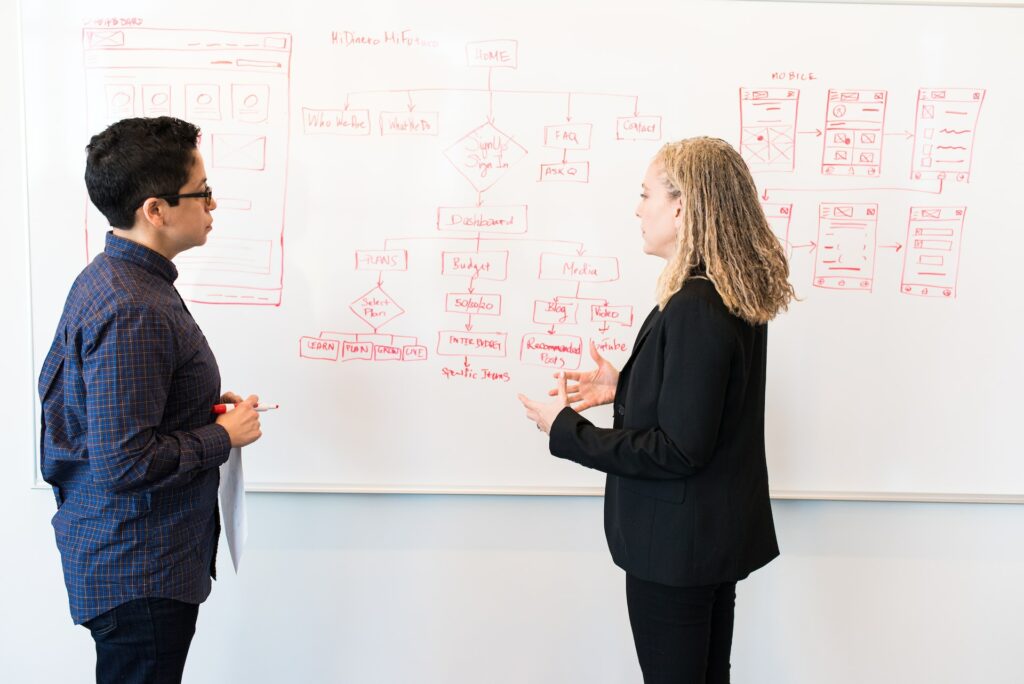Every now and then, a technology emerges that takes the world by storm, appearing to be an “overnight success.” For those in the tech industry, GPT (Generative Pre-trained Transformer) models seem to have erupted out of nowhere. They quickly became a staple in various applications, from chatbots and content generation to data analysis and automation. However, what may appear as instantaneous success is often a journey years or even decades in the making.
Here at Creative Mines, we believe that the true tale of GPT’s “overnight success” is an excellent lesson in how persistence, continuous learning, and incremental advancements can lead to groundbreaking innovations. We can help you integrate AI into your business.
The Early Days: How it All Started
Before the GPT models we know today, there was a long history of research and development in natural language processing (NLP). Back in the ’50s, the very idea that machines could understand and interpret human language was stuff of science fiction. Initial attempts at machine translation and basic text analysis were rudimentary at best. They were hampered by limited computational power and rudimentary algorithms.
One of the major stumbling blocks in the early days of NLP was the severe limitation in computational power. Computers in the ’50s and ’60s were primitive by today’s standards. They lacked the processing capacity to handle the immense amount of data and calculations required for natural language understanding. As a result, early NLP projects were hamstrung by these constraints.
It wasn’t until the late 20th century that neural networks, which are at the heart of modern deep learning, started gaining attention in NLP. Researchers began to experiment with neural network architectures for language tasks, but these early attempts were modest compared to the sophisticated models we have today.
These early struggles and triumphs in NLP laid the foundation for the revolutionary developments we witness today, reminding us that “overnight success” is often the result of persistent, long-term dedication to a field of study.
The Building Blocks: From LSTM to Transformers
Progress in the field of NLP is built upon layers of previous work, innovations, and discoveries. Long Short-Term Memory (LSTM) networks and Recurrent Neural Networks (RNNs) made sequence prediction better, but they were not very efficient at handling long-range dependencies within text. This was a significant drawback for effective language understanding and generation.
The introduction of the Transformer architecture in 2017 was a leap forward. It not only solved the problem of long-range dependencies but also improved the speed and efficiency of training models. Transformers laid the foundational architecture upon which GPT was built.
GPT: Taking Transformers to the Next Level
OpenAI’s GPT took the Transformer architecture and ran with it. Combining transformer architecture with massive datasets and unprecedented computational power. The first version, GPT, was released in 2018, followed by GPT-2 in 2019. Each version became progressively better at understanding context, generating text, and performing various language tasks without task-specific training data. This progressive improvement showcases the power of iterative development and research in the AI field.
In essence, OpenAI’s GPT series, starting with GPT-1 in 2018 and evolving into GPT-2 and beyond, marked a pivotal moment in the field of natural language processing. It demonstrated the capability of large-scale Transformer-based models to understand and generate human language. It also set the stage for further advancements in AI-powered text processing. GPT’s journey is a testament to the power of combining innovative architectural design with the vast computational resources and datasets of the digital age.

What Makes GPT a Success?
The most obvious measure of GPT’s success is its widespread adoption and application across industries. Today, GPT models are being used for:
- Customer service bots
- Content generation and curation
- Sentiment analysis
- Automated reporting
- Data analytics
- Language translation
- And many more
However, the true essence of GPT’s success extends beyond its impressive capabilities and widespread adoption. It lies in its extraordinary adaptability and unwavering robustness, attributes honed over years of collective research and development. This adaptability is what allows GPT to seamlessly integrate into diverse industries, readily grasping the intricacies of language and context, and adapting to the unique needs of each application. Its robustness, a product of relentless testing and refining, ensures that it performs reliably across an array of tasks, empowering businesses and researchers alike to harness its power with confidence. In essence, GPT’s success is a testament to the dedication of countless minds striving for technological excellence, forging a path to AI that is not just powerful but dependable and versatile. We can help integrate AI into YOUR business
Lessons from the GPT Journey
GPT’s journey from a theoretical concept to a robust, deployable technology offers a few key takeaways:
- Persistence is Key: Success often comes to those who are in it for the long haul. Years of foundational research laid the groundwork for GPT’s “overnight success.”
- Standing on the Shoulders of Giants: No technology evolves in isolation. The Transformer architecture and large-scale data collection efforts played a crucial role in GPT’s development.
- Innovation is Incremental: While there are leaps in technological progress, they are made possible by the consistent, incremental efforts of a community of researchers, developers, and innovators.
- Adaptability is Essential: The sheer number of applications GPT models are good for is a testament to the power of creating flexible, adaptable technologies.
At Creative Mines, we understand that being at the forefront of technology means recognizing the years of effort that go into every “overnight success.” We are committed to applying the lessons from these journeys to provide our clients with state-of-the-art solutions, tailored for their unique needs.
Contact Us for tailored solutions leveraging the latest in AI and machine learning.




